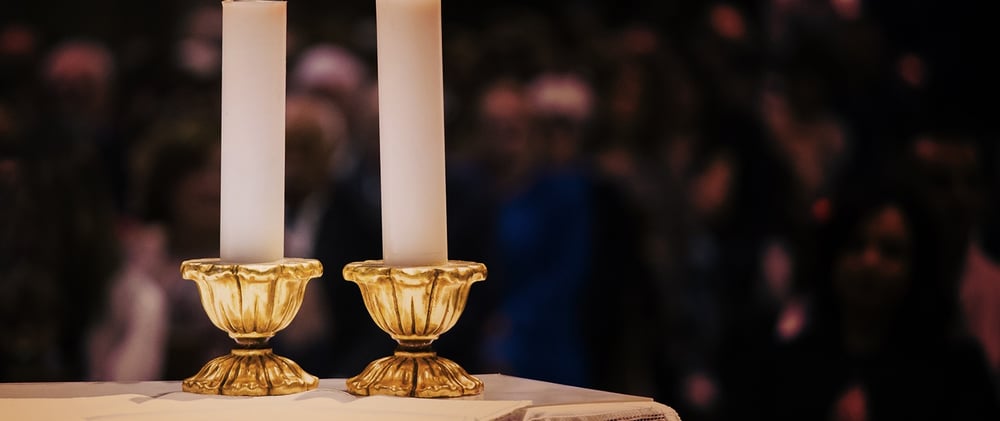This post is adapted from Gathered Guests: A Guide to Worship in the Lutheran Church, Second Edition.
The duties of an acolyte vary considerably, depending on the circumstances and location of the congregation, as well as the time of the service and the season of the Church Year. Acolytes often are young people from the congregation who assume the responsibility of lighting and extinguishing the candles before and after worship services.
Lighting Candles
On a few occasions, such as during an evening service or an Easter Vigil, the candles are lighted during the service following a precise pattern. The presiding minister will inform the acolyte of such details. For most regular services, the candles on the altar are lit several minutes before the service, following local custom.
Generally, here are the steps the minister can instruct an acolyte to take if there are two candles on the altar:
- Light the candle on the right as you face the altar.
- Bow slightly at the center of the altar toward the cross.
- Light the candle on the left.
If six or more candles are on the altar, the same procedure is followed:
- Light the candle on the right that is closest to the center or to the cross.
- Continue lighting the candles on the right outward until they are all lit.
- Return to the center and bow slightly toward the cross.
- Light the candle on the left that is closest to the center.
- Continue lighting the remaining candles outward.
If two acolytes are serving, each lights the candles on his side, beginning in the center.
At the end of the service, the candles are extinguished in the reverse order in which they were lit. Any other candles in the chancel are extinguished after those on the altar.
Carrying Candles
When carrying a candle in procession, called a torch, the acolyte should be careful not to tilt the torch because the wax may drip on the acolyte or on a worshiper, which could burn. Particular care is needed when walking up or down steps. The acolyte should hold the torch so the flame is above his head so worshipers may see it at all times. When standing still, the acolyte may rest the pole of the torch on the floor. An acolyte does not bow when holding a torch. This ensures that wax does not drip on him or on the floor.
Carrying Other Items during Processions
An acolyte may also serve as a crucifer (one who carries the cross), thurifer (one who carries the censer), bannerbearer, or bookbearer. If a large procession is planned, here is the order of entrances:
- The thurifer, swinging the censer gently, processes at a steady pace several pews ahead of the crucifer.
- The crucifer holds the cross steady and straight, with torchbearers on either side.
- If a banner is part of a procession, the bannerbearer places it in its stand (usually in the chancel) and straightens it.
- The bookbearer places the Bible on the altar or missal stand until the Gospel procession.
- The choir or other assisting ministers process.
- If deacons will be used in the service, they process.
- The presiding minister always comes last.
Acolytes also may assist in setting and removing sacred vessels for the Sacrament of the Altar. In all situations, the acolytes follow the presiding minister’s directions.
Learning about Worship and God’s Gifts
The acolyte role provides training for young men considering the pastoral ministry because it is an opportunity for ongoing education about the meaning of worship and the symbols, vessels, paraments, architecture, and furnishings related to worship. Worship leaders will want to encourage young people to become acolytes and nurture their understanding of the blessings of ministry and service to God’s gathered guests.
Learn more about the different roles for worship in Gathered Guests.
Blog post is adapted from Gathered Guests: A Guide to Worship in the Lutheran Church, Second Edition pages 434–36 © 2003, 2009 Timothy H. Maschke. Published by Concordia Publishing House.













.jpg?width=50&height=50&name=IMG_20220621_160541_456%20(1).jpg)
